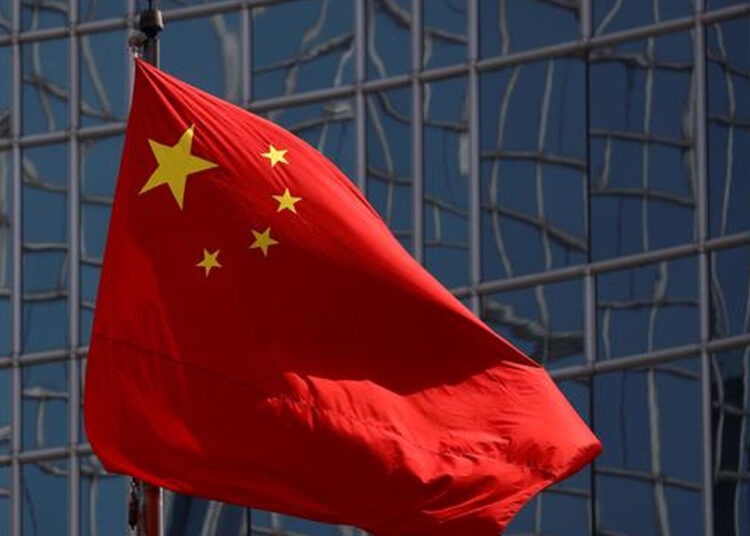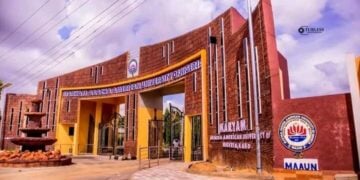Institutional search for global peace and development has been on for decades, and is still ongoing. At different times, the world has seen the emergence of bodies like the United Nations, the European Union, the North Atlantic Treaty Organisation, the BRICS group, the Organisation of Islamic Cooperation, the African Union, the ECOWAS, the Belt and Road Initiative and Forum for China-Africa Cooperation, FOCAC among others.
The common denominator of all those bodies is the concern of how to make member countries, and by extension the world and its component parts, a much better place for increased stability, peace and prosperity. The goal of promoting unity, development, trade and cultural exchanges are integral to most of the bodies. The cumulative objective, as it were, is to make the global future safer, more secure and enterprising.
Recall that after the 2nd world war in 1945, the global community decided to float the United Nations to entrench more peace, security and development in the ravaged and emotionally stricken world. On the heels of World War II in 1945, nations were in ruins, and the world wanted peace. Representatives of 50 countries gathered at the United Nations Conference on International Organization in San Francisco, California in the United States of America between 25 April and 26 June 1945, and two months after, the UN Charter was drafted and signed, and the United Nations was created to help prevent another world war.
The UN officially began, on 24 October 1945 after its Charter had been ratified by China, France, the Soviet Union, the United Kingdom, the United States and by a majority of other signatories.
Now, more than 75 years later, the United Nations is still working to maintain international peace and security, give humanitarian assistance to those in need, protect human rights, and uphold international law. The UN has also set sustainable development goals for 2030, in order to achieve a better and more sustainable future for all, including efforts to address climate action to limit global warming.
In recent times however, the authority of the UN in delivering its lofty mandates to the world has been challenged by recalcitrant states. We see in Israel‘s war on Gaza for instance, the refusal by Israel to obey international humanitarian laws of which the UN is a key custodian. Major countries have at different times been accused of violating international laws, relying on their customary characteristics that make them less enforceable.
Much like the UN, but with local characteristics, the Communist Party of China has taken steps that hope to harness the world much closer for a shared future where peace and development can be accessed by many, if not all societies, and where tangible and concrete outcomes can be delivered to all. This is good news if, as China has promised, the goal of the global development initiatives will not be skewed to give it undue advantage over other countries whether in the short term or in the long run.
President Xi Jinping, at different times, has placed emphasis on a “win-win” ideology that will deliver a “shared future” to mankind. This does not sound like manipulative rhetoric because the Chinese President has demonstrated palpable commitments in providing alternative platforms to draw the world much closer with a promise not to interfere in the internal local affairs of participating countries.
In pursuit of this objective, the State Council Information Office of the People’s Republic of China, in September 2023 came up with a template that will help drive increased empowerment and prosperity for the world. The template identifies that humanity is at a Crossroads, and requires Interdependence which has been a prevailing trend throughout history.
According to the template, Global challenges call for global response, while the new era calls for new ideas that will speedily transform global society on a path of wealth and prosperity by profeering an answer to the call of the times and a blueprint to secure the future.
The template cites China’s efforts in introducing a new approach to international relations on the basis of equality of nations. Other key aspects highlighted in the template include the new features of global governance, opening up new prospects for international exchanges, and an outline of a new vision for building a better world.
The template also prescribes pressing ahead with a new type of economic globalization that will follow a peaceful development path, and foster a new type of international relations that will embrace more of true multilateralism that will promote the common values of humanity. In this respect, China’s action and contribution will involve promoting high-quality Belt and Road cooperation, and implementing the three global initiatives which include the Global Development Initiative, Global Security Initiative, and Global Civilization Initiative proposed by China to guide the advancement of human society across the three dimensions. Resonating and complementing each other, the initiatives have evolved into a crucial cornerstone for building a global community of shared future, offering China’s solutions to major challenges pertaining to peace and development for humanity.
As observed recently by Cui Jianchun, the Ambassador of China to Nigeria in an article, in building a community with a shared future for mankind, the goal is to build an open, inclusive, clean and beautiful world of lasting peace, universal security and shared prosperity, and that the pathway is promoting global governance that features extensive consultation and joint contribution for shared benefit. The guiding principle is to apply the common values of humanity, the basic underpinning lying in building a new type of international relations, with the strategic guidance coming from the implementation of the Global Development Initiative, the Global Security Initiative and the Global Civilization Initiative, and the platform for action is high-quality Belt and Road cooperation.
– Bello, is Chief Operating Officer of Peoples Daily Media
Regarding the Belt and Road Initiative as a road connecting civilizations for the New Era, concrete tangible outcomes can be found from Xi’an, China’s ancient capital at the foot of the Qinling Mountains to Lisbon, the European city on the continent’s western edge; from the coastal city Xiamen in southeastern China to the Port of San Antonio across the Pacific: the Belt and Road Initiative (BRI) is connecting countries across the globe, where people with different skin colors and speaking different languages proudly nurture their cultures. Living in a world of different civilizations, beliefs and customs, should we progress alone or together? And should we stay behind close doors or embrace one another? China’s answer is clear: Build a bridge of interaction and mutual learning, and make the BRI a road connecting different civilizations.
Part of China’s global development initiatives in Africa include the China-Africa Think Tank Forum, and the Forum for China Africa Cooperation (FOCAC). Recall that the 13th meeting of the China-Africa Think Tank Forum was concluded in Dar es Salaam with a message that the world is like a village with a shared future and understanding.




